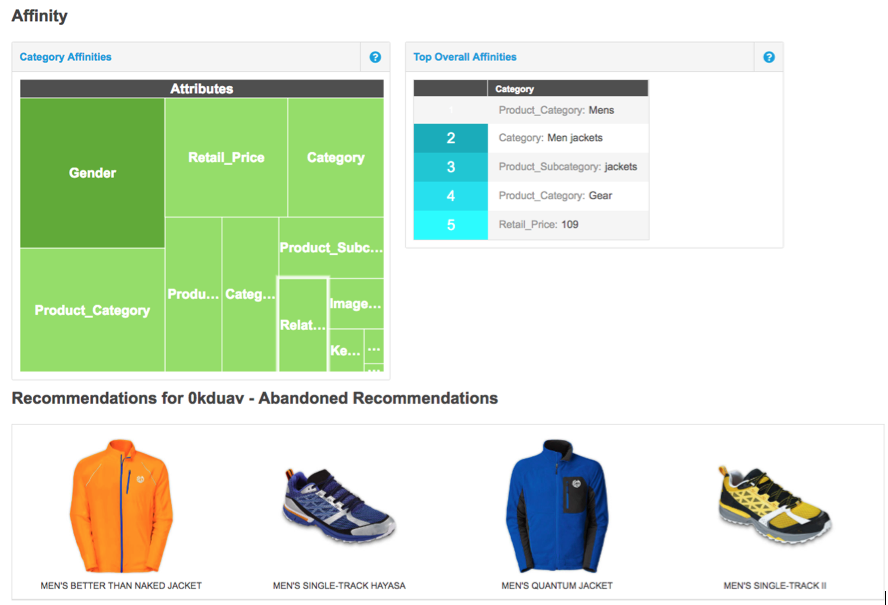
Get your FREE 30-day trial.
Please complete all fields.
I'll wager that if you ask 100 marketers to define 'personalization' you'll receive any 100 different opinions. Perhaps that's one of the reasons so many brands struggle to deliver the 1-to-1 experiences the majority of today's consumers expect.
Consider that according to Econsultancy, 9 in 10 marketers believe that personalization of the web experience is critical to current and future success, yet almost 3 in 4 also say that they don't yet know how to do it.
But for brands that unlock how to create personalized customer experiences across channels, the rewards are profound. Companies like Fanatics deliver highly relevant and contextual messages with email offers and web recommendations that appeal to each individual based on his or her preferences, location, historical behaviors, and other key factors.
Others, like Luxottica, compete against the likes of Wal-Mart and Costco by connecting to consumers with precision and combining digital advertising with email. They harness their data to not only engage inactive email subscribers, but also acquire new customers.
In the financial services sector, Calamos connects with its core audience-financial advisors-to provide individualized digital experiences. The company has mastered the ability to engage with personalized, real-time content recommendations based on the firm an advisor works for, the content viewed by similar users, or even the advisor's unique browsing activity.
There are many degrees of personalization, from none to basic to advanced. As you move left to right on the spectrum, message relevancy increases. On the one end there is zero personalization-this is more than 1-to-many, it is 1-to-all. And on the opposite end we have personalization that is predictive-not just 1-to-1, but proactive in crafting the right next experience for each customer.

Now that we have a framework, the next step is to actually deliver a personalized experience. We've already established that not all personalization is created equal, so as you move along the spectrum the strategies become more sophisticated-there is a direct correlation to increased engagement and higher customer satisfaction.
Personalization is driven by the marketer manually selecting criteria-like stated customer preferences, location or other demographics-to target audiences. The result is that different audiences receive different campaigns, but the content within each is the same for each audience member.

Audience Segmentation in the Marketing Cloud
Building on audience personalization, a segment or rules-driven approach empowers marketers to build rules using customer attributes and automate content or messaging decisions. Dynamic content is an example of this within a message, where a loyalty member may see a different offer based on their status tier. A decision split in a customer journey or drip campaign, based on a customer attribute or status (mobile vs. non-mobile subscriber) is another example.

Dynamic Content in Email
Moving farther right, personalization predicated on an event or customer behavior gets even more timely and relevant. This strategy is also defined by automation, so that the marketer can set a rule or rely on a modeling engine to deliver an individualized experience. Triggered messages, like an abandoned shopping cart reminder, fall into this category, as well as product or content recommendations based on aggregated browse and customer behavior, often referred to as "wisdom of the crowds".

Post-Purchase Trigger Launching a Customer Journey
True 1-to-1 relevancy comes when marketing messages and content are aligned with individual profiles and an individual's unique interests and tastes. Profile-based personalization is defined by much of the same automation and segmentation techniques of previous strategies but to an even higher degree. The real differentiator is the overall relevancy of the message, medium and content. For instance, where behavior-based approaches may rely on algorithms to drive crowd-sourced recommendations, a profile-based strategy pairs this baseline learning with implicit and explicit insights about the individual captured in their unique profile. This is what sophisticated providers of personalization technology, like Salesforce Marketing Cloud, are driving towards, making each interaction a truly personal experience.

Individual profile-based Product Recommendations
Today, the opportunity to personalize doesn't end once you've reach 1-to-1 relevancy. With advanced machine learning, you can take the learnings from the crowd and about an individual and do more than just respond with timely, relevant content. You can become truly proactive in your marketing , adapting the customer journey, messaging and content based on projected customer action or intent.

Predictive Email - Correlated Attributes for Customer Likelihood to Open an Email
There are many degrees of marketing personalization-and no brand achieves an advanced level overnight. Regardless of where your organization currently resides on the spectrum, Marketing Cloud can help you take the next step toward increased engagement and higher customer satisfaction.
For insights into how the world's best marketers achieve true 1-to-1 personalization, check out the 2016 State of Marketing report. You'll find specific tips and tactics to master digital marketing personalization.